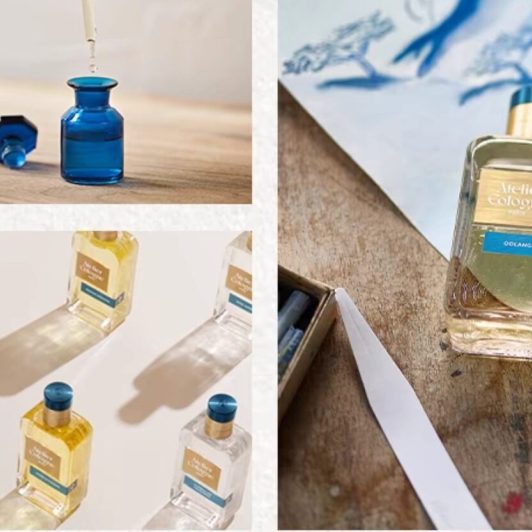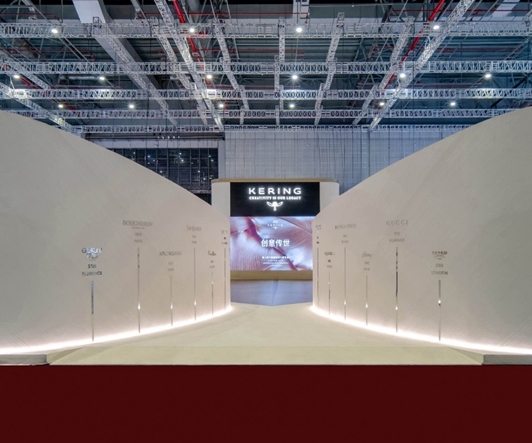This week, the “Rebirth from the Ashes: Notre-Dame de Paris Augmented Reality Immersive Exhibition,” jointly presented by the National Museum of China, the Notre-Dame public restoration agency, and L’Oréal Group, officially opened in Beijing.
In April 2019, the spire of Notre-Dame de Paris collapsed in a devastating fire, leaving many in sorrow. Since then, architects, restoration experts, institutions, and corporations from around the world have actively participated in the cathedral’s rebuilding efforts. French beauty and luxury giants such as L’Oréal Group, LVMH Group, and Kering Group generously donated hundreds of millions of euros toward the restoration.
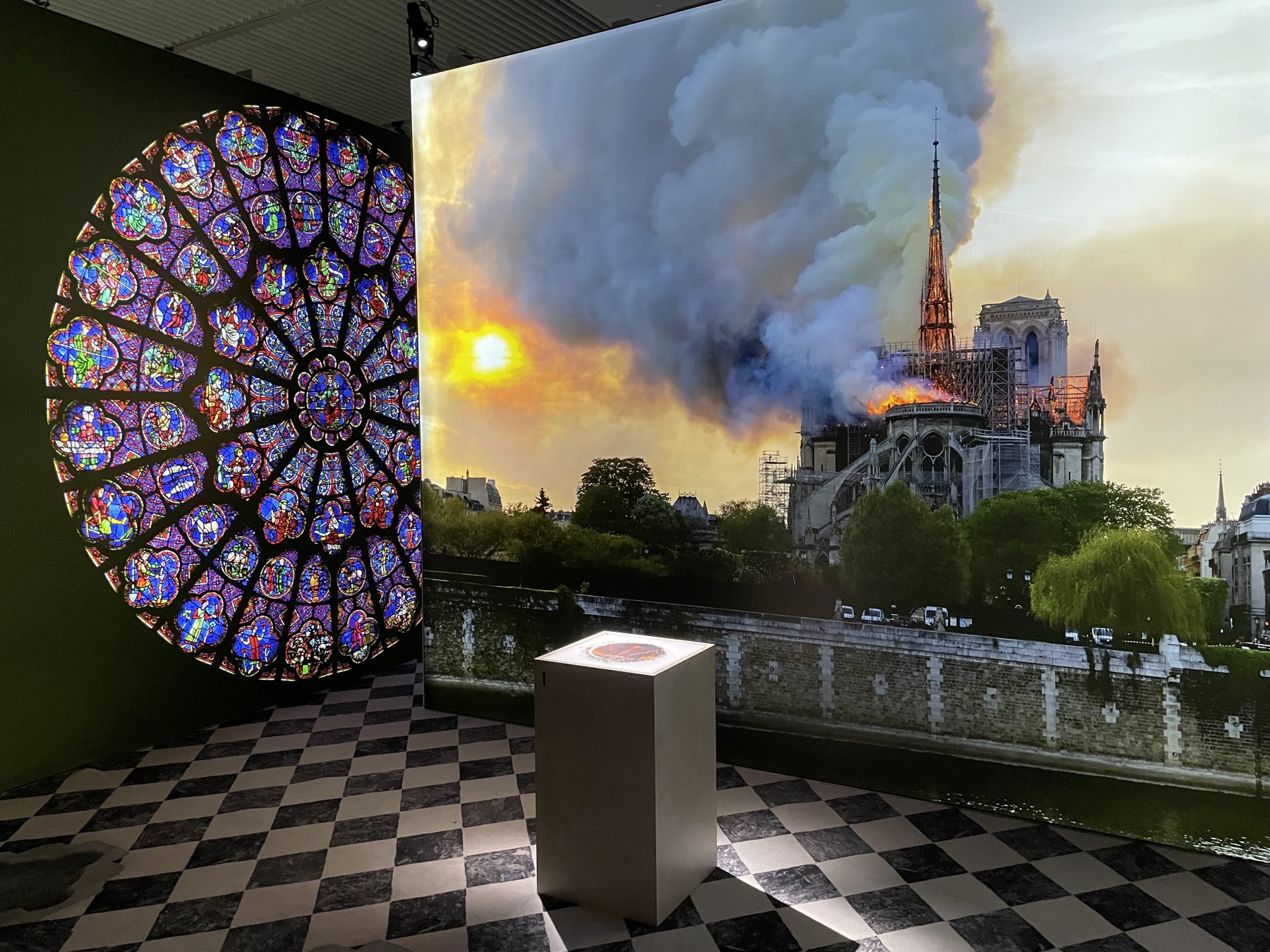
By the end of this year, Notre-Dame de Paris will be fully restored and reopen to the public. Digital technology has played a pivotal role in the reconstruction process, with high-precision 3D data providing a clear guide for restoration. This data also helps bring the ancient and mysterious cathedral back to life in a virtual world through the exhibition.
The latest digital technologies are also showcased in the global touring “Notre-Dame de Paris Augmented Reality Immersive Exhibition,” curated by the Notre-Dame public restoration agency and the French technology company Histovery, with support from L’Oréal Group.
The exhibition reconstructs a “digital twin” of Notre-Dame de Paris through augmented reality (AR), displaying the real beauty of art through virtual imagery. Visitors can witness Napoleon’s coronation, explore the secrets behind the radiant rose windows, and learn about the restoration progress of the cathedral. With highly customizable exploration routes and interactive experiences, visitors of all ages and backgrounds can uncover different aspects of the cathedral’s beauty.

Invited by L’Oréal Group, Luxe.CO visited the National Museum of China to experience this splendid exhibition firsthand, highlighting five key points for readers.
Highlight 1: Four Authentic Relics from Notre-Dame de Paris
As part of the official cultural exchange program marking the 60th anniversary of diplomatic relations between China and France, this exhibition at the National Museum of China stands out in the global tour. Four precious relics from Notre-Dame de Paris are being exhibited in China for the first time, with three of them making their debut outside of France. One notable artifact is a 13th-century Gothic column capital that dates back to the cathedral’s original construction. Among the items on display for the first time abroad are two mid-19th century sculptures by architect Eugène Viollet-le-Duc, representing the famed “gargoyles” and “grotesques” of the cathedral.

The “gargoyle” (pictured above) was originally part of Notre-Dame’s rainwater drainage system, with over 200 adorning the cathedral. The “grotesque” (pictured below), a decorative feature of the iconic spire, reflects the symbolic and fantastical aesthetics of the Middle Ages.

Highlight 2: Immerse in the Construction in 1163
Over its 800-year history, Notre-Dame has endured numerous trials and rebirths. Curators selected ten pivotal moments from the cathedral’s history, where visitors can use a tablet called the HistoPad, developed by the Histovery team, to scan through a “time tunnel” and step into these historical moments.
Behind the AR-simulated images of the cathedral’s construction, a photograph from the same location taken in September 2021 is displayed, allowing visitors to witness the transformation by moving a progress bar on the tablet. In the first section, representing the early construction phase of 1163, visitors can hold up the tablet to see the familiar contours of the building.

From the architectural supervisor’s hand-drawn plans to the selection, excavation, and transportation of wood and stone, the AR visuals meticulously present the key moments and rich details of the 1160s construction process. The research team, with a scientific mindset, conducted detailed analysis to restore historical accuracy, right down to the attire of the craftsmen and the method used to transport materials.
The quarrying scene, presented in the exhibition, is based on the Lutetian limestone quarry located less than 800 meters from Notre-Dame. The Bievre River, a tributary of the Seine, ran through this quarry, allowing stone blocks to be transported by water directly to the construction site. “We must be careful, as these images will leave a lasting impression on people’s minds,” said one of the designers.
Highlight 3: “Participate” in Napoleon’s Coronation
The exhibition vividly brings to life many of the key figures in Notre-Dame’s history: Bishop Maurice de Sully, who oversaw its construction; Napoleon I and Empress Josephine; Victor Hugo and his character Quasimodo; and architects Jean-Baptiste Lassus and Eugène Viollet-le-Duc, among others.
One iconic moment recreated in the exhibition is Napoleon placing the crown on Empress Josephine’s head, a scene derived from Jacques-Louis David’s famous painting The Coronation of Napoleon. The immersive AR display extends beyond the original painting, as historians reconstructed the off-canvas scene based on research. Since no visual references were available for some of the new figures, the Histovery team “disguised” their own members to fill these roles in this significant historical event.
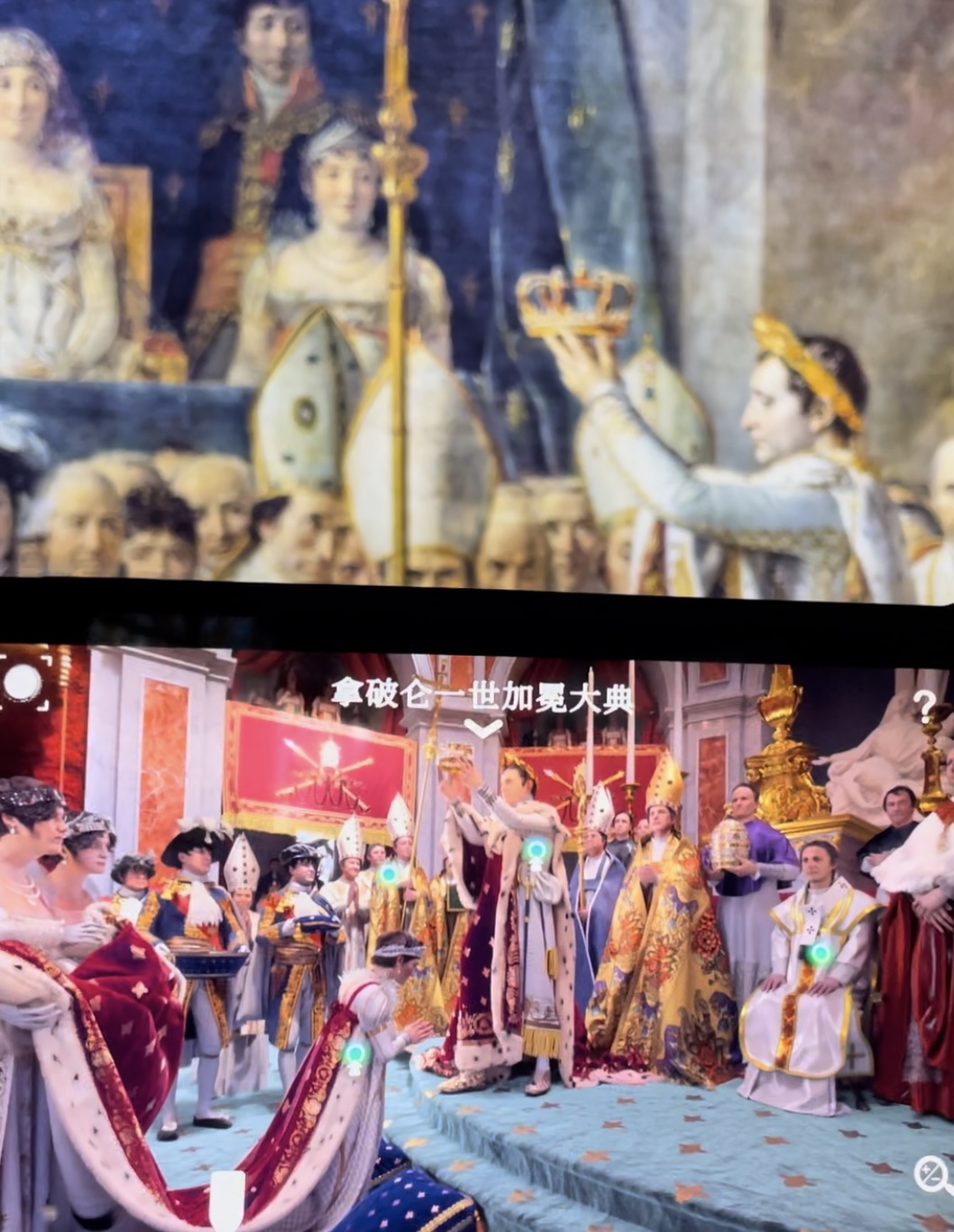
Highlight 4: Exploring the Layers of the Rose Window
The famed rose window on the façade of Notre-Dame illuminates the cathedral’s interior with sunlight during sunset.
At the exhibition, the splendid rose window (pictured below) is displayed through projections. Using the HistoPad’s guided system, visitors can explore the intricate meanings behind each layer of the window’s design.
At the center of the rose window is the Virgin Mary holding the Christ Child, with the outer lower sections depicting the Zodiac signs and the agricultural tasks corresponding to each month. This combination of cosmic and earthly calendars reflects how divine time shaped the rhythm of medieval life.
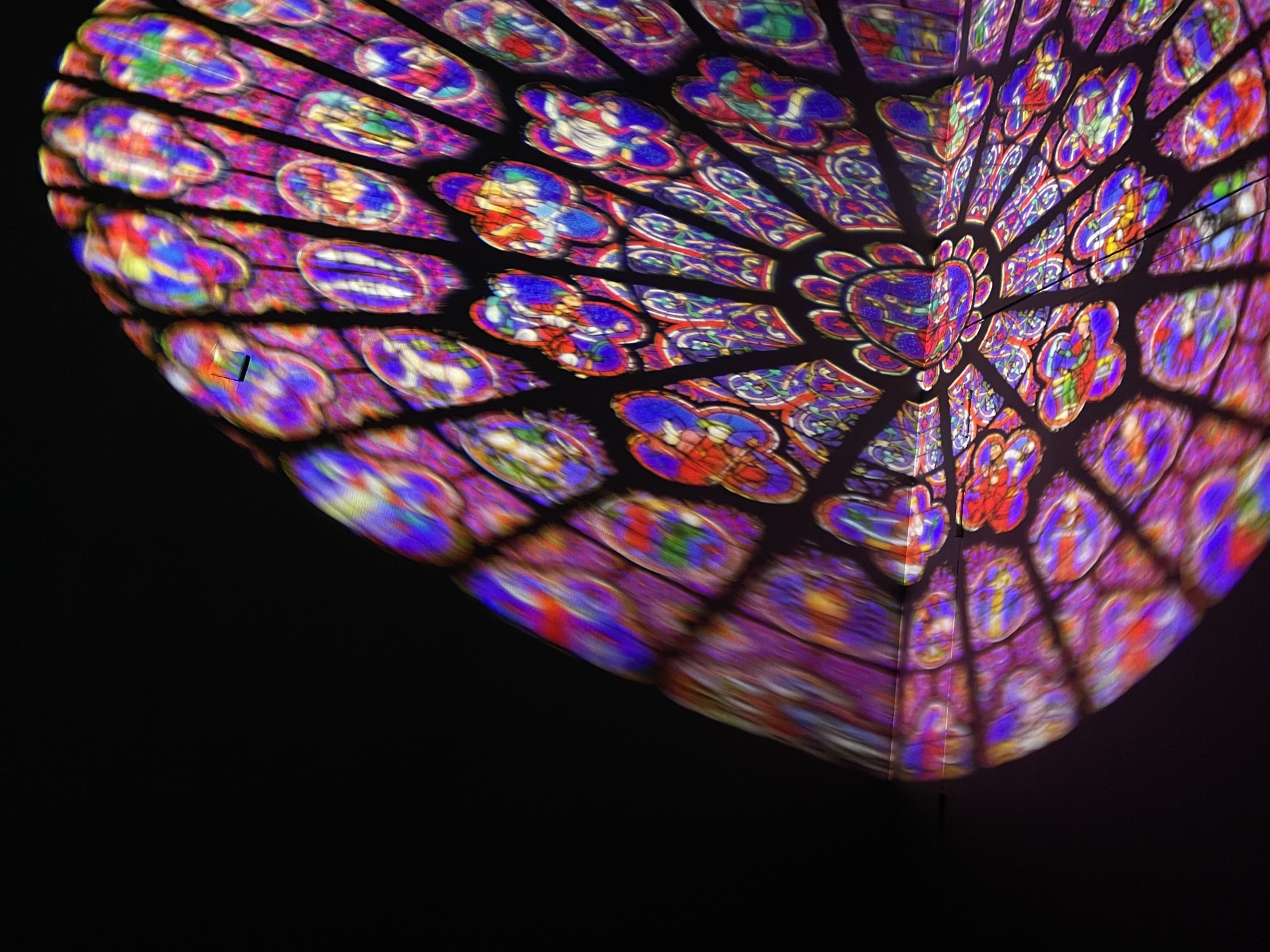
Highlight 5: 100+ Restoration Projects and 2,000 Oak Trees
Before restoration could begin, the first task was to rescue the relics. The fire destroyed the cathedral’s timber roof, leaving the structure unstable. The collapsed spire had pierced the vaults, and over ten thousand tons of water used to extinguish the fire left the cathedral in ruins. Before restoration could proceed, an extensive stabilization project was undertaken, including the removal and safeguarding of artifacts and the reinforcement of flying buttresses. This phase took more than two years. The image below shows the removal of stained glass windows.

The restoration of this great monument, using original materials wherever possible, involves over 100 different projects, such as restoring the spire, the roof structure, the masonry, and the grand organ. The reconstruction of 25 timber roof trusses required 2,000 oak trees, sourced from century-old forests in central and northern France.
At the exhibition’s opening, Fabrice Megarbane, President of L’Oréal Group North Asia and CEO of L’Oréal China, stated, “In this special year marking the 60th anniversary of diplomatic relations between China and France, as well as the 115th anniversary of L’Oréal Group, we are honored to collaborate with the National Museum of China. This exhibition, which brings together culture, art, and technology, acts as a bridge to deepen mutual understanding between the Chinese and French people, promoting cultural integration and contributing to the soft power in economic and trade relations between the two countries. Notre-Dame de Paris, as a spiritual landmark that has witnessed nearly a thousand years of French civilization, is a treasure that reflects the timeless creativity of humanity. Through this exhibition, we hope to inspire more people to join us in protecting, celebrating, and sharing the beauty, vitality, and creativity that Notre-Dame embodies. Let’s create beauty together and move the world.”
The exhibition is located in Hall 3 North of the National Museum of China and is open to the public from September 12 to October 20.
| Source: L’Oréal Group, National Museum of China
| Image Credit: Luxe.CO onsite photography, L’Oréal Group
| Editor: LeZhi

